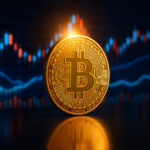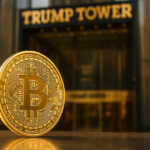Gold price is nearing its all-time high at $3,433, further fueling its up-and-to-the-right rally in 2025, as escalating tensions in the Middle East drive investors toward traditional safe-haven assets.
The surge in gold price reflects not only geopolitical uncertainty but also a broader shift in global reserve strategies. The ECB reported last week that gold had overtaken the euro in 2024 as the world’s second-most important reserve asset, driven by record purchases by central banks.
Over the past month, the spot gold price has climbed nearly 5%, rebounding from a mid-May low of around $3,123 and gaining 1.6% overnight, pushing it above $3,400 and close to its April all-time high of $3,500. For the year so far, gold is up more than 30%, making it one of the best-performing asset classes in 2025.
Geopolitical uncertainty is driving gold price higher
The primary catalyst for gold’s recent gains is the escalation of tensions in the Middle East following Israel’s military strike on Iran’s nuclear sites. Markets have grown increasingly nervous about the potential for broader regional conflict and prompting a flight to safety, as investors pile into gold.
The Dow Jones Industrial Average fell 679.83 points and the S&P 500 dropped 1.13%, as the price of oil soared by 7% in a single day, the largest intraday move since the early days of the Ukraine war. Despite an initial tumble, Bitcoin recovered to $105,000 at the time of writing, showing relative stability.
Higher oil prices are expected to drive up costs for gasoline and diesel, adding to inflationary pressures that are already a concern for central banks and consumers alike and enhancing gold’s appeal as a hedge against inflation and economic instability.
Gold overtook the euro among reserve assets in 2024
Gold’s rise to become the world’s second-largest reserve asset in 2024, surpassing the euro, is a sizable development in global finance. According to the latest data from the ECB report, the U.S. dollar remains dominant with a 46% share of global reserves, followed by gold at 20% and the euro at 16%.
The shift reflects a long-term trend of central banks diversifying their reserves away from traditional currencies in response to geopolitical risks and concerns over the weaponization of the dollar.
Central banks have been net buyers of gold for three consecutive years, with annual purchases exceeding 1,000 tonnes, double the pace of the previous decade. Demand is expected to continue, stoking the bullish case for gold and prompting everyone’s favorite gold bug, Peter Schiff, to comment:
“Gold is close to a new record high, but the $GDX is already trading at its highest level since Sept. 2012. The fact that gold mining stocks are now leading the metal is a sign that this gold bull market has kicked into a higher gear, as is the recent breakout in silver. Got gold?”
Gold’s performance in 2025 reinforces its appeal as a safe-haven asset, with prices close to all-time highs and its new status as the world’s second-largest reserve asset. Meanwhile, while Bitcoin continues to hold steady, the world’s number-one crypto has yet to displace gold as the ultimate hedge in turbulent times.
The post Gold price nears all-time high amid fears of broader regional Middle Eastern conflict appeared first on CryptoSlate.







